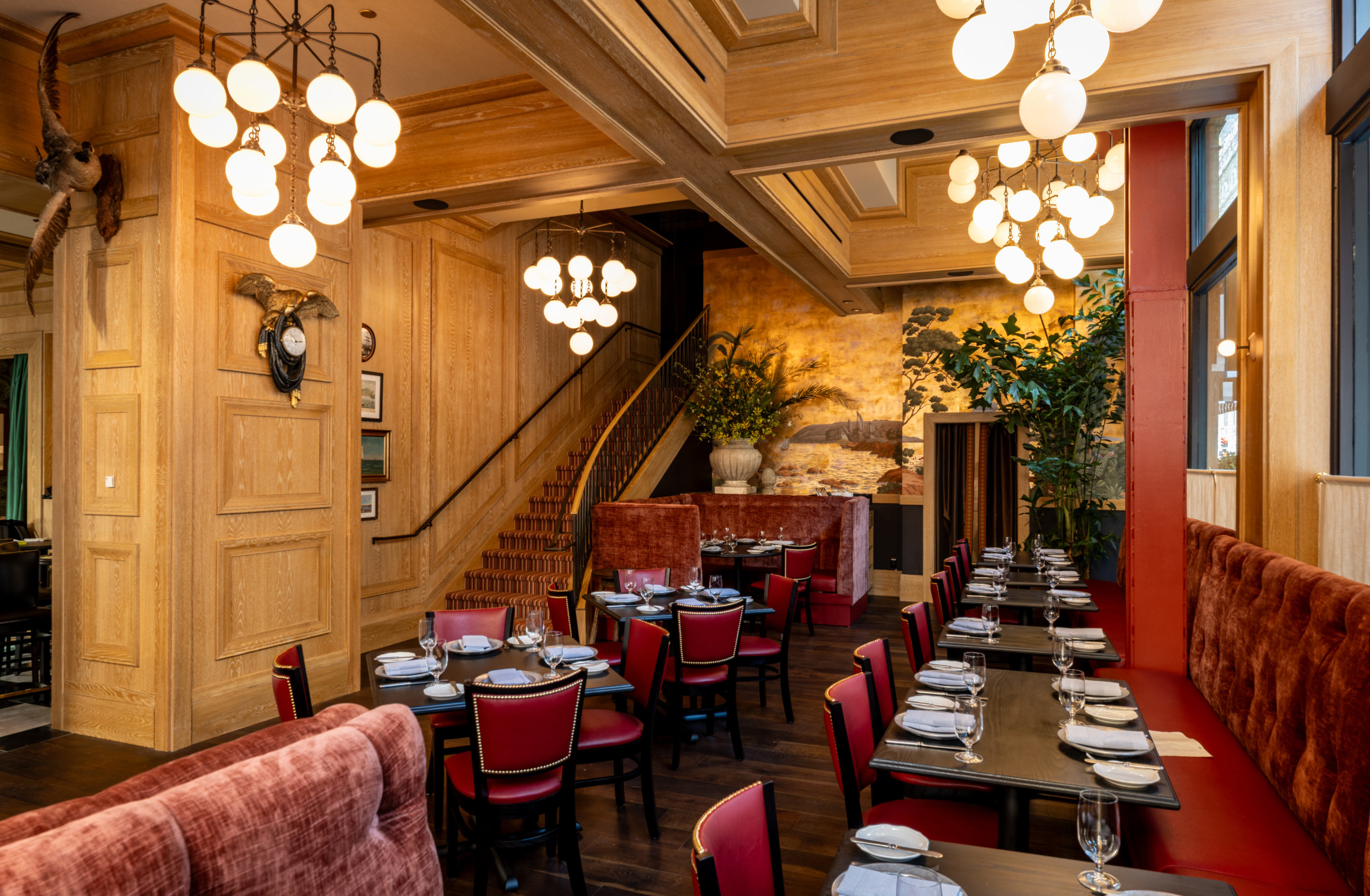
Restaurant operators are drowning in phone calls. Between inquisitive tourists, diners running late, and complex reservation changes, your staff spends countless hours on the phone instead of focusing on what matters most—creating exceptional dining experiences. (Hostie AI) The solution? AI-powered phone automation that handles these interactions seamlessly.
Two platforms have emerged as frontrunners in restaurant phone automation: Hostie AI and Dineline AI. Both promise to revolutionize how restaurants handle customer communications, but they take dramatically different approaches to pricing and features. (Hostie AI) While Hostie AI offers a straightforward $199 monthly subscription, Dineline AI uses a pay-per-open-hour model at $3.50 per hour.
This comprehensive comparison will help you navigate the decision between these two platforms, examining everything from setup complexity to language support, POS integrations to uptime guarantees. We'll break down the real costs, explore feature differences, and provide decision matrices to help you choose the right AI receptionist for your restaurant.
The restaurant industry has embraced AI technology at an unprecedented pace. Large fast-food chains such as Chick-fil-A, Wendy's, and Taco Bell have implemented AI bots in their restaurant operations to tackle challenges such as inflation, supply chain issues, and labor shortages. (Hospitality Tech)
AI-enabled machines and devices in the restaurant industry can analyze their surroundings, make informed decisions, and offer customized services to customers. (JWU Scholars Archive) This technological shift isn't just about efficiency—it's about creating better experiences for both staff and guests.
Hostie AI emerged from this need, created by a restaurant owner and an AI engineer, Brendan Wood, who initially developed the solution to help reduce tension at Back to Back, a wood-fired pizza restaurant in San Francisco's Nob Hill neighborhood. (Hostie AI) This real-world origin story gives Hostie AI a unique perspective on restaurant operations that purely tech-focused companies often lack.
Hostie AI positions itself as "AI for restaurants, made by restaurants," and this philosophy permeates every aspect of the platform. (Hostie AI) The system handles calls, texts, emails, reservations, and orders through an AI assistant named Jasmine, who can fluently speak 20 languages. (Hostie AI)
The platform integrates directly with existing reservation systems, POS systems, and even event planning software, making it a comprehensive guest management solution. (Hostie AI) After integrating with partner establishments such as Flour + Water and Slanted Door, Hostie AI now handles over 80% of their guest communications automatically.
Dineline AI takes a different approach with its pay-per-open-hour pricing model at $3.50 per hour. This structure appeals to restaurants that want to pay only for active service hours, making it potentially cost-effective for establishments with limited operating hours or seasonal operations.
While specific feature details for Dineline AI aren't extensively documented in available sources, the pricing model suggests a focus on flexibility and cost control for restaurant operators who prefer usage-based billing over flat subscriptions.
Hostie AI Setup Process:
Hostie AI's restaurant-native design shows in its implementation approach. The platform integrates with major reservation systems and leading POS systems, offering 24/7 management of bookings and orders. (Hostie AI) The setup process is streamlined for restaurant operators who may not have extensive technical backgrounds.
Dineline AI Setup Process:
While specific setup details for Dineline AI aren't available in the research, pay-per-hour models typically require more granular configuration to ensure accurate billing and service activation during operating hours only.
Hostie AI offers comprehensive POS integration capabilities, connecting with leading systems to ensure seamless order processing and inventory management. (Hostie AI) This integration depth allows the AI to handle complex order modifications, special requests, and dietary restriction accommodations without human intervention.
The integration extends beyond basic order taking to include real-time inventory checks, pricing updates, and promotional offers, creating a truly unified system that reduces the risk of errors and miscommunications.
Hostie AI's multilingual capabilities stand out significantly. Jasmine, the AI assistant, can fluently speak 20 languages, providing real-time language translation for guest communications. (Hostie AI) This feature is particularly valuable for restaurants in diverse metropolitan areas or tourist destinations.
The language support goes beyond simple translation—the AI understands cultural nuances and communication styles, ensuring that interactions feel natural regardless of the caller's preferred language.
Hostie AI provides 24/7 automated call answering with natural conversation abilities, ensuring that no call goes unanswered regardless of time or staff availability. (Hostie AI) This constant availability is crucial for restaurants that receive calls outside business hours or during peak service times when staff are focused on in-house guests.
The platform's reliability has been proven through partnerships with high-profile establishments like Flour + Water and Slanted Door, where it successfully handles the majority of guest communications without service interruptions.
Hostie AI can handle all kinds of requests: from simple reservation changes to complex private event inquiries and complicated order modifications. (Hostie AI) However, the system is designed to seamlessly transfer calls to human staff when situations require personal attention or exceed the AI's capabilities.
This intelligent handoff system ensures that guests never feel stuck in an automated loop while maintaining efficiency for routine inquiries that don't require human intervention.
Hostie AI: At $199 per month, Hostie AI sits right at the budget tier threshold. (Hostie AI) This flat-rate pricing provides predictable costs and unlimited usage within the service parameters.
Dineline AI: For restaurants open 8 hours daily, Dineline AI would cost approximately $840 per month (8 hours × 30 days × $3.50), placing it well above the budget tier. However, restaurants with very limited hours (under 2 hours daily) could potentially fit within this budget range.
Hostie AI: The $199 base price positions Hostie AI at the lower end of this tier, potentially offering additional features or premium support options that could bring total costs into the mid-range.
Dineline AI: Most full-service restaurants operating 6-10 hours daily would fall into this pricing tier with Dineline AI, making it competitive for establishments that value usage-based billing.
Hostie AI: Premium features, multiple locations, or enterprise-level support could push Hostie AI into this tier, though the base offering remains accessible.
Dineline AI: Restaurants with extended hours (12+ hours daily) or multiple locations would quickly reach premium pricing levels with the per-hour model.
| Factor | Weight | Hostie AI Score | Dineline AI Score | Winner |
|---|---|---|---|---|
| Pricing Predictability | High | 9/10 | 6/10 | Hostie AI |
| Feature Completeness | High | 9/10 | 7/10 | Hostie AI |
| Language Support | Medium | 10/10 | 6/10 | Hostie AI |
| POS Integration | High | 9/10 | 7/10 | Hostie AI |
| Setup Simplicity | Medium | 8/10 | 7/10 | Hostie AI |
| Cost for Limited Hours | Low | 6/10 | 9/10 | Dineline AI |
| Proven Track Record | High | 9/10 | 6/10 | Hostie AI |
Flour + Water and Slanted Door represent two different restaurant archetypes that have successfully implemented Hostie AI. (Hostie AI) These establishments now handle over 80% of their guest communications automatically, freeing staff to focus on in-person service excellence.
The success at these high-profile restaurants demonstrates Hostie AI's ability to handle sophisticated dining environments where guest expectations are particularly high. Teams have reported growing customer satisfaction in the dining experience and customer service after using Hostie AI, indicating that automation enhances rather than detracts from the guest experience.
AI software pricing models are evolving to reflect the unique value and interaction customers have with AI tools. (LinkedIn) Many AI companies still use subscription-based models, especially for general-purpose AI tools, though these models may not capture the true value the AI delivers.
Value metrics for AI software focus on measurable outcomes like tasks completed, problems solved, or efficiency improved. (LinkedIn) This trend suggests that both pricing models—Hostie AI's flat subscription and Dineline AI's usage-based approach—have merit depending on the restaurant's specific needs and usage patterns.
Hostie AI's approach to integration reflects its restaurant-industry origins. The platform connects with existing reservation systems, POS systems, and event planning software without requiring extensive technical expertise from restaurant operators. (Hostie AI)
This seamless integration capability is crucial for restaurants that can't afford extended downtime or complex technical implementations. The system is designed to work with the tools restaurants are already using rather than forcing them to adopt new systems.
As restaurants grow or add locations, pricing models become increasingly important. Hostie AI's flat-rate structure provides predictable scaling costs, while Dineline AI's per-hour model could become expensive for high-volume operations.
The ability to handle complex requests—from simple reservation changes to complicated order modifications—positions Hostie AI well for restaurants planning to expand their service offerings or operating hours. (Hostie AI)
Both platforms must handle sensitive customer information, including payment details, personal preferences, and contact information. Restaurant operators should evaluate each platform's security measures, compliance certifications, and data handling practices.
Hostie AI's integration with established POS systems suggests adherence to industry-standard security protocols, while the platform's work with high-profile restaurants indicates robust security measures.
Hostie AI TCO Factors:
Dineline AI TCO Factors:
Restaurants field a high volume of phone calls from inquisitive tourists or diners running late. (Hostie AI) If a restaurant receives 50 calls per day and each call takes an average of 3 minutes of staff time at $15/hour wages, the daily cost of manual call handling is approximately $37.50.
Over a month, this represents $1,125 in labor costs just for phone management. Both AI platforms can significantly reduce this expense while improving response consistency and availability.
Hostie AI's ability to handle 80% of guest communications automatically at partner restaurants demonstrates substantial productivity gains. (Hostie AI) This automation allows staff to focus on in-person service, food preparation, and other revenue-generating activities.
The 24/7 availability also captures potential revenue from after-hours calls that might otherwise go to voicemail, representing additional income opportunities that help justify the platform investment.
The AI landscape continues evolving rapidly, with new capabilities emerging regularly. Hostie AI's restaurant-specific focus suggests ongoing development aligned with industry needs, while broader AI platforms may offer more general improvements that may or may not benefit restaurant operations.
When evaluating platforms, consider their development roadmaps, update frequency, and responsiveness to industry feedback. Platforms with strong restaurant industry connections are more likely to develop features that directly address operational challenges.
As your restaurant grows, your AI platform should grow with you. Hostie AI's flat-rate pricing provides predictable scaling costs, while usage-based models like Dineline AI's may become expensive as call volume increases.
Consider not just current needs but projected growth over the next 2-3 years. A platform that works well for a single location may not be cost-effective for a restaurant group, while enterprise-focused solutions might be overkill for independent operators.
The restaurant technology ecosystem continues expanding, with new tools for inventory management, staff scheduling, customer loyalty, and analytics. Choose an AI platform with robust integration capabilities and an active development community to ensure compatibility with future technology additions.
Hostie AI's comprehensive integration approach with reservation systems, POS systems, and event planning software demonstrates this ecosystem thinking. (Hostie AI)
Operating Hours: Restaurants with limited hours may benefit from Dineline AI's usage-based pricing, while full-service establishments typically find better value in Hostie AI's flat rate.
Call Volume: High-volume restaurants benefit more from unlimited usage models, while low-volume operations might prefer pay-per-use structures.
Language Requirements: Hostie AI's 20-language support is unmatched for diverse customer bases. (Hostie AI)
Integration Needs: Restaurants with complex POS and reservation systems benefit from Hostie AI's comprehensive integration capabilities.
Budget Predictability: Fixed monthly costs (Hostie AI) versus variable usage costs (Dineline AI) suit different financial management styles.
Choose Hostie AI if:
Choose Dineline AI if:
Regardless of which platform you choose, successful implementation requires careful planning and realistic expectations. AI phone automation represents a significant operational change that affects both staff workflows and customer interactions.
Start with a clear understanding of your current call patterns, staff capabilities, and customer expectations. Both platforms offer the potential for significant operational improvements, but success depends on proper implementation and ongoing optimization.
The restaurant industry's embrace of AI technology continues accelerating, with more establishments recognizing the benefits of automated guest communications. (Hospitality Tech) Whether you choose Hostie AI's restaurant-native approach or Dineline AI's flexible pricing model, the key is selecting a platform that aligns with your operational needs and growth plans.
By carefully evaluating the factors outlined in this comparison—from pricing structures to feature completeness, integration capabilities to scalability—you can make an informed decision that enhances your restaurant's efficiency while maintaining the hospitality standards your guests expect.
Hostie AI offers a flat subscription model at $199 per month, providing predictable costs regardless of call volume. Dineline AI uses a usage-based model at $3.50 per hour, which can be more cost-effective for restaurants with lower call volumes but may become expensive for high-traffic establishments.
For high-volume restaurants receiving numerous daily calls, Hostie AI's flat $199 monthly fee typically provides better value than Dineline AI's per-hour pricing. Hostie AI also offers 24/7 management of bookings and orders with integration to major reservation and POS systems, making it ideal for busy establishments.
Yes, Hostie AI's virtual assistant Jasmine is multilingual and can fluently speak 20 languages, making it suitable for diverse customer bases. While Dineline AI also offers multilingual support, the specific number of supported languages may vary and should be confirmed based on your restaurant's needs.
Both systems offer integration capabilities, but Hostie AI specifically integrates with major reservation systems and leading POS systems for seamless operations. The integration allows for real-time management of reservations, orders, and customer communications across multiple channels including calls, texts, and emails.
Hostie AI is specifically designed "for restaurants, by restaurants," focusing on the unique challenges of restaurant phone management. According to Hostie's research, restaurant staff spend countless hours on phone calls instead of creating exceptional dining experiences, and their AI system addresses this by handling calls, texts, emails, reservations, and orders automatically.
Hostie AI's flat $199 monthly subscription offers more predictable budgeting compared to Dineline AI's usage-based $3.50 per-hour model. This aligns with industry trends where many AI companies use subscription-based models for general-purpose AI tools, as they provide cost certainty and easier financial planning for restaurant operators.
RELATED


